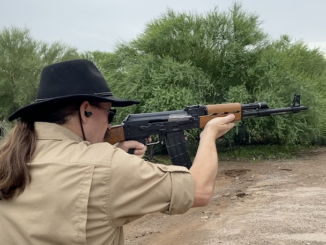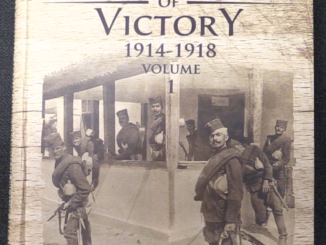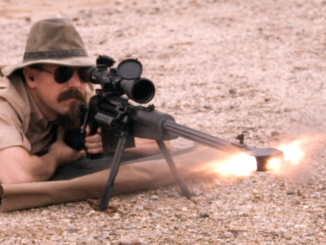The carbine in this video is available at auction here.
The DWM order placed in 1899 had not provided Serbia with as many rifles as it had wanted, but it would take until 1906 for the Kingdom to arrange another loan to purchase additional arms. This would come from France, and it allowed Serbia to order 30,000 rifles, 10,000 carbines, and 50,000 barrels (which they would use to convert their old 1880 rifles to 7×57) from Steyr in 1908. Delivery was made in full in 1909,plus an additional 2,530 rifles and carbines were shipped in 1910 and 1911 – presumably a contract overrun Steyr offered to the Serbs at a good price.
The rifles were basically identical to the previous DWM 1899 guns, with an improved rear sight designed by one Filip Petrovic and a gas relief hole milled in the underside of the bolt body. The carbines were the first such arms that Serbia had bought, but aside from the shorter barrel (17.6 inch / 448mm) and the bent bolt handle, they were mechanically identical to the 99/07 rifles.




Assault troops also favored this one (and Berthier carbines later), since they carried fighting knives (M.12 “Kindjal” type at the beginning of the WW1), they did not see ability to mount bayonet as a critical one.
Bayonets aren’t much use when fixed in trench conditions. Heck, a shovel or axe can be just as nasty as a knife once fighting gets too personal.
I heard from my maternal grandfather (past away when I was 18) at least at two occasions that Bosnian imperial troops had “long bayonets” (actually kind like short swords) on their rifles. Does anyone know what the origin of them was and why Bosnians would use them?
Long bayonets were actually pretty common in the 19th century. Some had hilts like swords, complete with guards, so they could also be used like an infantry hanger (a small sword) in hand to hand fighting in close spaces.
The main purpose of a long bayonet was to give more reach when defending against cavalry. Both bayonets and rifles became shorter during WWI due to the conditions of trench warfare.
IIRC I also found mention that there was believing that fixed bayonets will boost morale, however I don’t remember which time or army it affected.
However I hope none believing in bayonet to THAT degree:
https://onsizzle.com/i/chaos-titans-are-decimating-our-troops-how-can-we-stop-20103447
(there Titan = walker, sort of super-heavy tank)
“Bosnian imperial troops had “long bayonets” (actually kind like short swords) on their rifles.”
I assume that it meant longer than default Mannlicher 1895 bayonet and being sword bayonet. After some searching I think it might be in fact older pattern of Austrian weaponry, namely Kavallerie und Gendarmerie-Repetier-Karabiner M1886, see 1st photo from bottom here: http://www.hungariae.com/Mann86.htm
Additionally it might looks longer due to being attached to shorter weapon, it would also be more sword-like than bayonets for 1895 (which have cutting edge on opposite side than most sword bayonets), also notice nuisance for quartermasters – bayonets for 1895 are incompatible with 1886 rifles.
Standardized bayonet and bayonet lug compatibility dimensions could save a great deal of trouble. The Type 30 bayonets were a good example as Japanese long rifles past 1897 (and even the short rifles, excluding cavalry carbines) would easily accept them!
Daweo – Britain’s Napoleonic Rifle Regiments were issuesd the Baker Rifle, which as it was shorter than the musket, was given a long “sword” bayonet.
https://www.deviantart.com/darthpandanl/art/Gunbucket-Baker-Rifle-840380106
To this day, their descendents in the British Army do not “Fix Bayonets”, the command is “Fix Swords”
Second the pattern of bayonet you show is commonly called a “Yataghan” Our Leader has even done a video on them
https://www.forgottenweapons.com/forgotten-weapons-short-yataghan-bayonets/
In México, and in Spain, If I´m not wrong, that configuratión is named “tercerola”; shorter than a carabin per se.
Sorry, *carbin (carabina)
I own a serbian M1908 missing the bolt anyone know where I can obtain one